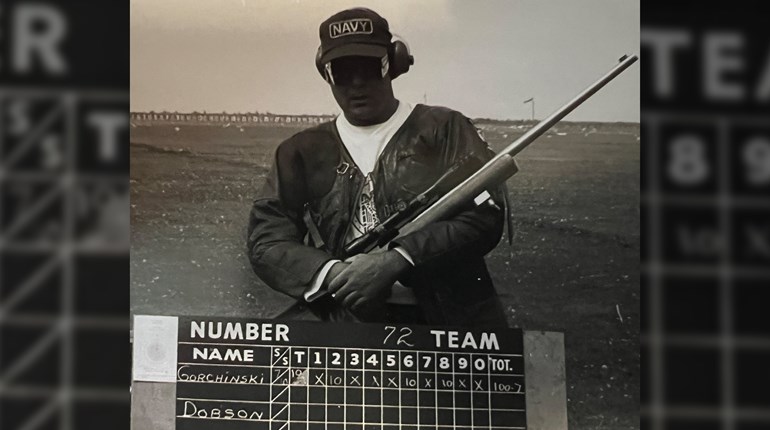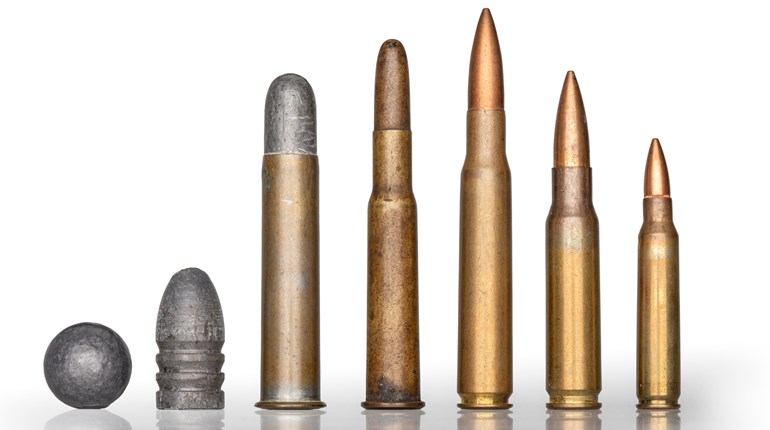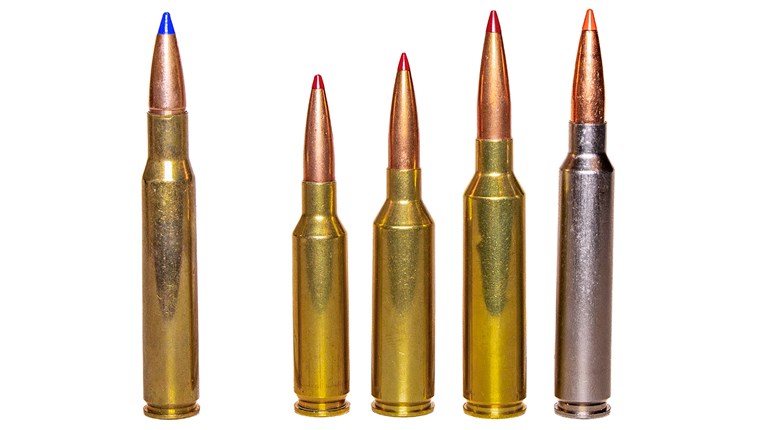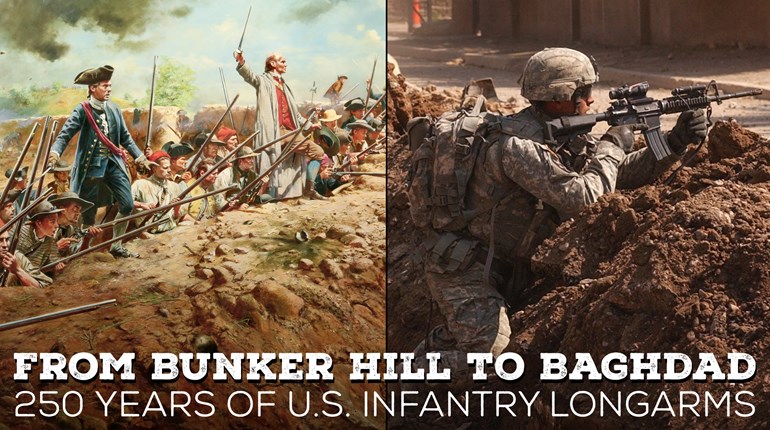
The closest competitor to the M16 platform in terms of longevity is the M1903 Springfield with 33 years, followed by the 1917 Enfield with 26. In terms of numbers made and used in wartime, I think the title would have to go to the much-beloved M1 Garand.
The point is simply that in about a century and a half of taking cartridge-firing shoulder weapons into combat, we have used a great many service rifles. There were brief digressions to such numbers as the Straight-Pull Lee and recoil-operated Johnson. Those P17 Enfields would never have made the list but for the fact we could not tool up to make enough '03 Springfields for World War I. Remington had a working plant to make Enfields for the British, and it was easy to convert from the .303 Brit. to .30-'06 Sprg., so there were actually more of them made than the "official" M1903.
Service rifles are a fascinating topic. I am astonished to realize a man could have been born at the dawn of the M16 era, grown to adulthood, enlisted, served 20 years and retired—without ever knowing any other service rifle. But, I am more concerned this month with the fascinating rifle that preceded the M16.
It's the M14, a rifle that is, in essence, a major face-lift for the venerable M1 Garand. It came along at a point in history—right after the Korean War—when every nation wanted to upgrade its weaponry based on wartime experience. The Garand was widely viewed as the best battle rifle of World War II, but it had problems with low capacity, no way to top off the internal magazine and excess weight. It was good enough for the immediate post-war era and served with distinction in Korea, but some improvements were needed. After test trials lasting several years, the emergent champion was the M14, which was intended to replace the M1, M2 Carbine, M3 submachine gun and Browning Automatic Rifle. It was a decent replacement for the M1, easily outdid the M2 Carbine and the M3 was outmoded anyway, but it couldn't touch the BAR.
A selective-fire rifle using the new 7.62 NATO cartridge fed from a 20-round box magazine, the M14 had an improved flash hider and a new gas system. It made a respectable battle rifle, but never matched the durability and performance of the BAR as a squad automatic. In full-automatic mode, recoil and muzzle rise were enough to waste all but the first shot. I started in the Marines with the M1 Garand and BAR, both rifles I greatly admired. After a full five years away from the Fleet Marine Force, I was assigned to the 1st Marine Division, newly armed with the M14. It looked and handled much like the Garand, so I was pretty optimistic. This was the weapon with which my troops were armed in 1964, as we underwent the last bit of training before deploying to Vietnam.
A few problems developed with the new rifle. For one thing, a flash suppressor alignment problem that played hell with accuracy. Also, its magazines tended to be fragile, a matter dealt with by the way you handled them. Eventually, we worked out the kinks and, by the time I rotated home, I was an enthusiastic booster of the M14 as an infantry rifle, if not a squad automatic. And the with new 7.62 NATO round, at least when you shot someone with it, the recipient tended to be convinced he had, in fact, been shot.
Then somebody decided it would be a good idea to start using a much smaller bullet. This was based on the fallacious reasoning that if you shot more times, you might hit more things—and if the cartridges were smaller, you could carry a lot more of them. I will refrain from repeating what has been written over and over about the whole M16/5.56 NATO debate except to note that I know of two or three instances where both Army and Marine infantrymen fought to keep M14s that somehow didn't get turned in.
The M14 is a fine rifle, proven in the battles of the first couple of years in Vietnam. It is long gone from unit armories, but there are quantities of them still in inventory. They keep showing up when they are really needed—like in that shootout in Mogadishu, Somalia. When the Blackhawk went down in a hostile urban environment, two great Soldiers from Delta Force rappelled in to protect the wounded crew. They were equipped with a sniper-ized version of the M14, which they used to deadly effect. Both soldiers were killed in action, and both were posthumously awarded the Medal of Honor.
There is more than a little talk about going back to the 7.62 NATO. This would correct the arguably unsound reasoning that led us to adopt the smaller 5.56 NATO. I wish I had the insight to make an informed conclusion about which way it will go, but I don't. Still, I'm thrilled the M14 lives on as Springfield Armory's M1A.
I fondly recall one of my last shoots with the late Chuck Karwan. We were at Gunsite, shooting several models of the M1A. With Hornady's 110-grain TAP load, the rifle was so stable I could put the dot sight on a pepper popper and apply two quick presses of the trigger. Boom! Boom! Clang! Clang!—100-yard hammers.
I introduced Karwan to the game, and we spent the rest of the afternoon with this great gun and ammo combination. It was one fine hunk of fightin' iron.






































